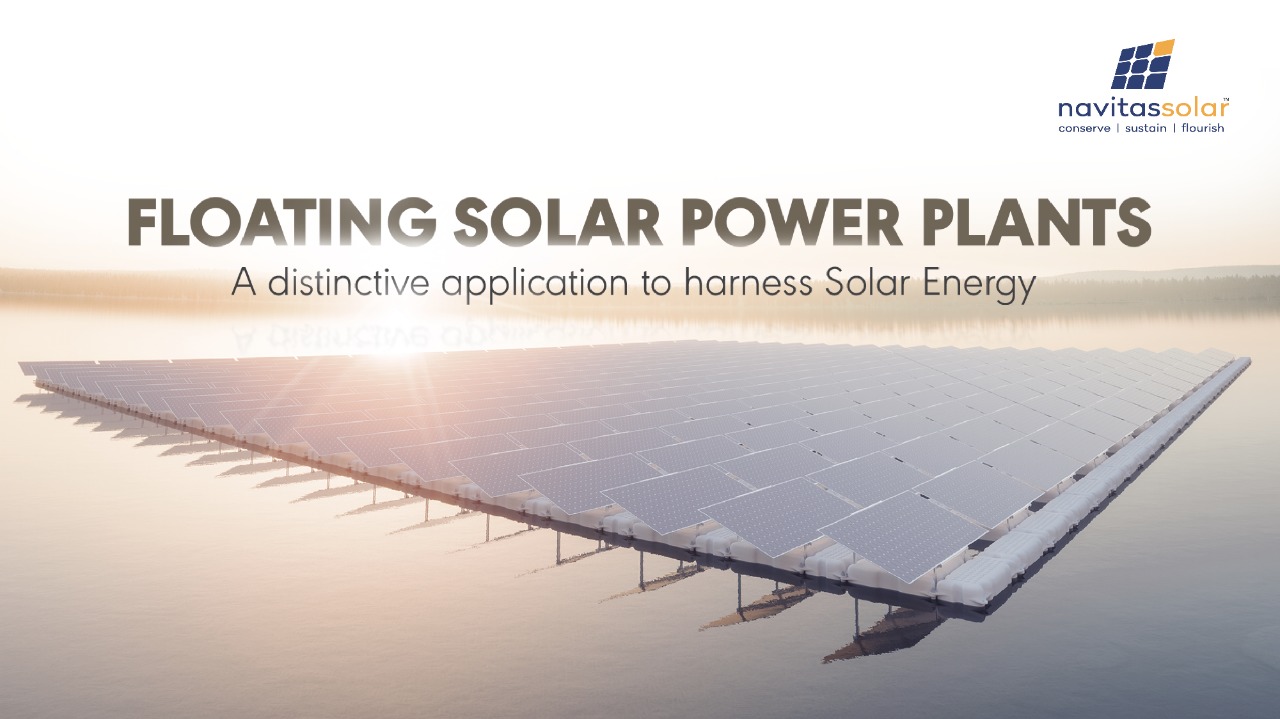Floating Solar Power Plants: A distinctive application to harness Solar Energy
As the world is looking for ways of producing cleaner energy, there is an increasing demand for doing this in most environment-friendly ways. One of such ways is to reduce the need of land for solar farms. Many countries are trying use lakes and reservoirs to set up large solar farms, known as floating solar systems, also called FPVs. These solar farms like any kind of solar power systems, but the major difference is, they float on water.
Such solar farm can be set up in a pond, a lake, a reservoir, etc. The concept has many benefits, like not need of land, producing comparatively more electricity, being easy to keep up, and so on. Let’s go deeper into the pros and cons of floating solar farms.
Considering the advantages of floating solar farms, India is adopting it in a big way. In Khandwa, Madhya Pradesh, a floating solar farm is being built, which is said to be the biggest floating solar farm in the world, at a cost of more than Rs. 3000 crores. It will produce 600 Megawatts of power by 2023. Meanwhile another large scale floating solar power project in India is now up and running in Telangana. With the commencement of this 100-MW Solar PV Project at Telangana, there are now 217 MW of floating solar power in the Southern Region that can be used commercially.
Floating solar has lately gained favour all around the world and countries like US, China, Netherlands, and Japan are going for it in a big way. A floating solar farm in China’s Dezhou Dingzhuang, with a capacity of 320 MW, is believed to be the largest in the World so far. Meanwhile, United States Department of Defence has also made its first solar array, which is the largest of its kind in the South-eastern United States.
Here are some reasons why floating solar is gaining traction across the world. To begin with, the floating solar power plant doesn’t need any land space, which is good because land resources are getting harder to find. The water’s surface is open, so trees, mountains, and other things do not block the sunrays coming to the floating solar panels. Just like other electronics, solar panels make less power when the temperature goes up. But in a floating solar farm, water cools the solar panels, which keep them working even when it’s hot outside. Tests done on large-scale floating solar plants show that the cooling effect of water can increase the power output of floating solar by about 11 to 16%. The water’s cooling impact, which reduces thermal losses and increases their lifespan. Additionally, the panels limit evaporation from water bodies when temperatures are high, thereby conserving potable water. Experts believe that the enhanced efficiency covers the higher installation cost of the floating solar farms and technological developments should soon bring them at par with ground systems in terms of cost.
Moreover, the shade that the solar panels create over water can help cut down on algae blooms and water loss from evaporation, which protect the water resources. The floating solar farm is also easy to take care of because it is built on the water. This also helps cut down on dust pollution. The neatly arranged PV arrays also create beautiful sights that bring in a lot of tourists!
But there are some things that don’t work well with floating solar. For example, the solar floating system needs to keep the solar panels on the water for more than 25 years, so the racking system needs to be resistant to corrosion, last a long time, be able to hold a lot of weight, etc. Putting up solar panels on water may cost more than putting up solar panels on the ground. Because this is a fairly new type of solar power, it needs specialized solar power equipment and more specialized knowledge about how to install solar panels.
At, Navitas Solar, a leading module manufacturing company, we appreciate the concept of Floating Solar Power Plant and we encourage more and more distinctive applications of solar energy.


 Online | Privacy policy
Online | Privacy policy
Related Posts
You May Also Like
Bonito Series: Driving Innovation in…
Read MoreTOPCon Series: The Next Generation…
Read MoreValuable Points to Remember During…
Read MoreNavitas Planet Partners with Hysolwin…
Read MoreDriving Towards a Sustainable Future:…
Read MoreWhy Do Top-Grade EVA Sheets…
Read MoreBonito Series: Driving Innovation in…
Read MoreTOPCon Series: The Next Generation…
Read MoreValuable Points to Remember During…
Read MoreNavitas Planet Partners with Hysolwin…
Read MoreDriving Towards a Sustainable Future:…
Read MoreWhy Do Top-Grade EVA Sheets…
Read MoreBonito Series: Driving Innovation in…
Read MoreTOPCon Series: The Next Generation…
Read MoreValuable Points to Remember During…
Read MoreNavitas Planet Partners with Hysolwin…
Read More